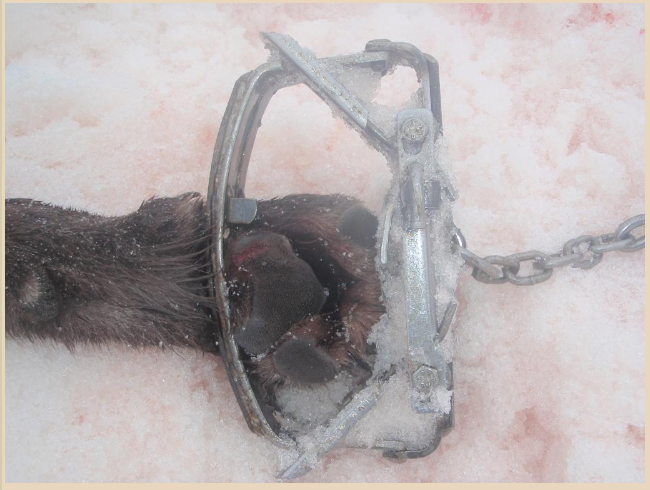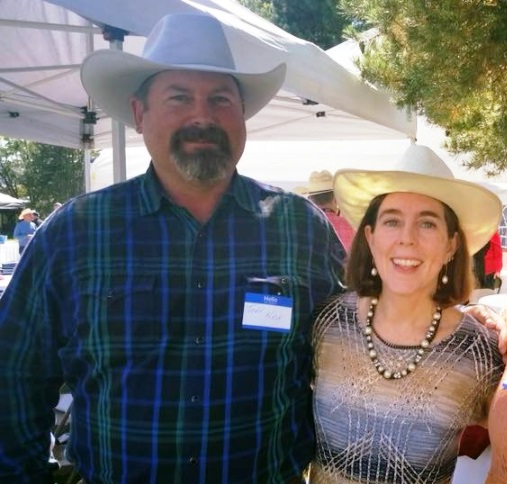|

Last fall, as ODFW was issuing yet another kill order for wolves we posted a piece called The Friday Trash. The provocative title invoked the practice used by politicians and government agencies to hold bad news until late on a Friday making it more likely to get overlooked by the media and public. The piece highlighted a few of the facts ODFW didn’t want you to know about their latest wolf kill.
Our concern at the time was that ODFW was setting terrible precedent and making killing wolves “the new normal”. The agency continues to set the bar ever lower. As we described in our monthly wildlife update, it’s been utter chaos at Director Curt Melcher’s agency.
The trash no longer just comes out on Friday. We’ve seen ODFW redact press releases on the fly and not even understand what their own kill orders entail.
So far, ODFW has killed three members of the Pine Creek Pack and authorized killing two more. That's despite the fact that the family of wolves is now feeding newborn pups somewhere in the Wallowa Mountains. It’s beginning to feel like the dust has settled and we think it’s important that more of the story gets told.
Things have changed since the initial kill order was issued, but let’s travel back in time…
On Monday, April 7th, ODFW informed the public of a newly named pack of wolves – the Pine Creek Pack. The family of wolves traces its roots to a pair of collared wolves that began travelling together in February of 2016.
Two days later, the agency published a map of their territory. The very next day, they issued kill orders.
ODFW has had their say in their hurried (and later redacted) press releases and statements. The livestock industry made their perspective clear in the Baker Herald saying “I would like to see the whole pack annihilated”. Here are a few things they neglected to mention.
 For the first time we can remember. ODFW issued an initial kill order providing no guidance or restriction on which wolves should be killed. That left a heavily pregnant female wolf with a target on her back.
For the first time we can remember. ODFW issued an initial kill order providing no guidance or restriction on which wolves should be killed. That left a heavily pregnant female wolf with a target on her back.
- To his credit, the livestock operator delayed turning his cows and calves out into open pasture. However when he released them, he did so right on top of wolves he knew about. Once released, the young calves were left unattended. The first incident of predation was only known because it was reported by a hunter scouting for turkey.
- After the predation was confirmed on a Friday night, folks went to bed knowing full well the wolves were still there. It should have been no surprise that additional predation was discovered the next morning.
- After that incident, the state began implementing meaningful measures to prevent additional conflict. The predation stopped. ODFW issued kill orders anyway.
To be fair, a little over a week later, there was additional predation attributed to Pine Creek wolves. But guessing right that predation would continue isn’t a particularly grand accomplishment. And even if Director Melcher is in possession of a time machine, it doesn’t change the fact that:
- The kill orders were entirely unnecessary. The agency said human presence was the primary deterrent being used. If that fails, livestock operators already have the right to kill a wolf the moment it attacks their animals. These kill orders allowed active hunting of wolves who had eaten unattended livestock. That sound more like revenge than prevention.
- The agency only announced that they had given themselves the authority to shoot wolves after they had already shot and killed one.
- The agency issued kill permits to the livestock manager and allowed him to deputize any number of friends and family to kill wolves too. Got a couple cousins back in Iowa who’ve always wanted to go on a free wolf hunt? Here’s their chance!
- The state had given the livestock manager telemetry equipment and shared specific collar frequencies with known associates also hostile to wolf recovery.
Too Little Too Late?
So why were non-lethal conflict deterrence measures ultimately ineffective? It might have been a case of too little too late.
According to the agency’s first public statement about the kill orders, there were no attractants in the area. Setting aside the fact that unattended baby calves dispersed across the landscape are attractants, we later learned of large carcass piles in the area.
That concern was underscored when ODFW announced the killing of a second and third wolf by helicopter gunning less than a week later. As part of that release, the state justified the escalation in part on ongoing efforts to bury bone piles and remove carcasses.
Three seperate inquiries to ODFW resulted in three different explanations regarding how one can clean up attractants they said weren’t even there in the first place.
To Kill or to Clean Up?
 Those who want to see wolves killed love to euphemistically say “we need more tools in the toolbox”. But the only tools they’re really interested in using are lead ammunition, steel traps, and poison. Just like using a sawzall to make cabinets might be a lot of fun for some people, it’s not the best way to get the job done.
Those who want to see wolves killed love to euphemistically say “we need more tools in the toolbox”. But the only tools they’re really interested in using are lead ammunition, steel traps, and poison. Just like using a sawzall to make cabinets might be a lot of fun for some people, it’s not the best way to get the job done. Ethics aside, science is increasingly showing that there are more effective and economical ways to prevent conflict than killing wolves. Recent studies have shown that killing may have a temporary effect, but just as often it makes problems worse or it simply moves the problem.
Last year, ODFW issued kill orders for 10 wolves in response to the loss of 11 calves. That took place in the same area where ODFW issued kill orders in 2011, 2012, and 2016. The Pine Creek kill orders are in an immediately adjacent territory. Notably, they include OR-50, one of the survivors from last year’s kill orders who left the Harl Butte pack after the agency began killing his packmates.
Advocates for more killing will surely point to killing three wolves as the reason for the end of predations that's occurred in the last few weeks. They'll say that had we just killed OR-50 and a few more of his family members last year, maybe this wouldn't have happened.
But the facts on the ground provide alternatives. And since we don’t have a time machine of our own, we could also ask if ODFW’s most recent kills simply add to the growing pile of scientific evidence that killing just begets more killing.
Given the characters involved, we have to ask if this is a wolf problem or a people problem?
Pay up AND the wolf gets it
Last year’s killing of Harl Butte wolves was done to appease a politician and Oregon's most vocal advocate for killing wolves (who often speaks out against requirements to try to prevent conflict through non-lethal means). In fact, nearly every kill order issued by the state until now has been at his request.
This year’s kill orders were issued to Chad DelCurto. DelCurto was at the center of an OPB investigation into ongoing fraud and abuse of the state’s wolf compensation program.
Oregon’s wolf policy has been hijacked by the livestock industry. This is the clearest case yet of Oregon's policy of pay up and the wolf gets it!
DelCurto has claimed to have lost dozens of his animals to wolves in recent years. Despite compelling evidence to undermine those claims, the state has paid him thousands of dollars for livestock that he says simply went missing. Now the state is issuing him and his buddies telemetry equipment and wolf hunting permits. That's on top of state employees providing husbandry to protect his livestock and sending up helicopters to chase down and shoot yearling wolves. All of this is at taxpayer expense for an agency facing a historic budget crisis.
Notably, the DelCurto family has also received over $130,000 in federal farm subsidies in just the last three years. That’s on top of running cows on public lands for less than what it costs to feed a hamster.
Nearly every wolf legally killed in Oregon in the last decade has been on behalf of these two livestock managers (another two were killed nearby in 2009 after being drawn in by a two-acre carcass pit). It’s clear Oregon’s outdated Wolf Plan coupled with its flawed compensation program is providing exactly the wrong incentives...and some folks are taking full advantage.
Something Has Gone Terribly Wrong

A few days ago, ODFW issued yet another confusing press statement. It took a day for an ODFW spokesperson to confirm the state had added more wolves to the kill order and extended the time frame by two weeks. It got little to no public attention. Mission accomplished.
The breeding female is no longer pregnant. She’s still on the target list, but so are her pups – no more than a few days old.
Something has gone terribly wrong with Curt Melcher’s Agency.
Meanwhile, public inquiries to Governor Brown (seen here with the recipient of last year's Harl Butte kill orders) on any matter relating to wolves are met with a form letter drafted by ODFW staff over a year ago.
If ODFW wants to set the bar any lower, they’re going to have to dig out one of those carcass pits.
 '
'
